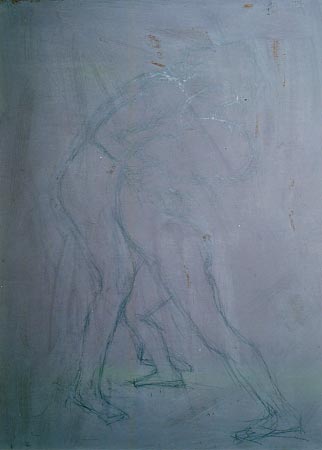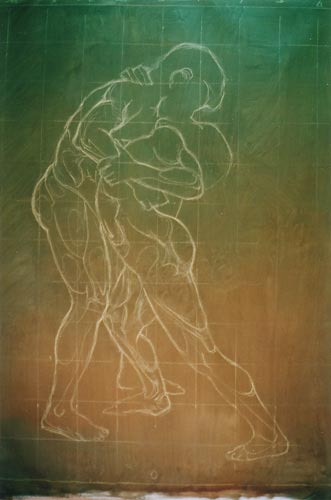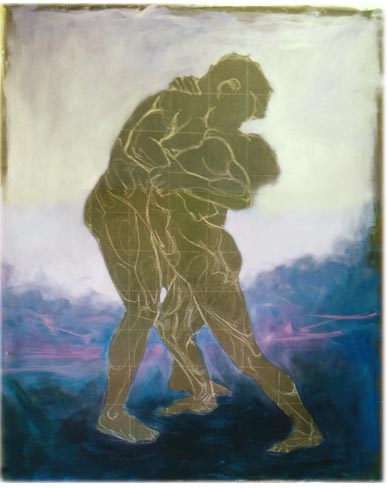'REALISM DEFINED'
One of the most difficult painting tasks it that of actually painting realistic flesh. Nowhere was this excelled but by the French Academy painters of the late nineteenth century or their counterparts across the channel such as Leighton, Waterhouse and Alma-Tadema. Perhaps the most sublime of all these was William Bouguereau whose paintings of people were so convincing it becomes most difficult to distinguish them as mere images. More than anyone Bouguereau made angels as real as the peasant girls he painted as pot-boilers for the more fashionable commercial market.
Bouguereau is the professional painter's benchmark for technical perfection in the rendering of flesh.So how did he do it? In this lesson I shall demonstrate a technique and provide a brief explanation of how he achieved such results.
In Fig.3 I have transferred my sketch using the 'grid' method and added some anatomical features. For a painter the study of anatomy is as important a skill as the practicing of scales to a musician or the use of a saw, chisel and drill is to a carpenter. There is no short cut to study and drawing of muscles, sinews and bones if a painter desires to paint the human form. My sketch here is done in chalk for easy removal.
In Fig.4 I suggest a background. Here, since the figures will dominate the painting, I place the horizon low (1/3 up). This will place a high contrast area across the middle of the picture. To further amplify the drama I shall eventually create within this background the three definite distances, far, middle-ground and fore-ground. One of the secrets of creating a super-realism is to allow the eye to be able to comprehend all distances at once. Of course this cannot be accomplished by a camera or by the eye without refocusing.
|



